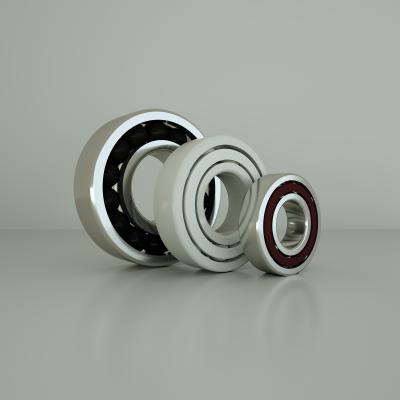
Boca Bearing Co. has expanded its existing inventory of machine tool spindle bearings and angular contact bearings in both standard and ceramic hybrid styles. Modern manufacturing calls for extremely precise and reliable machining. The company says its ceramic bearings and related products are for applications looking to increase speed, decrease temperatures and improve life.
A machine tool is a machine for shaping metal or other materials, usually by cutting, boring, grinding or shearing. Machine tools use a spindle that does the cutting or shaping. All machine tools have some means of holding the work piece and provide a guided path for the parts of the machine. The company's latest bearing design delivers high spindle speeds and increased stiffness. This allows the spindle to machine more material in less time while maintaining tolerances.
Angular contact bearings are designed such that there is an angle between the races and the balls when the bearing is in operation. Angular Contact bearings are typically assembled with a thrust load or preload. The preload creates a contact angle between the inner race, the ball and the outer race. In high-speed applications, such as turbines, jet engines and dentistry equipment, the centrifugal forces generated by the balls will change the contact angle at the inner and outer race.
Boca Bearings has a full range of bearings and balls in a variety of materials such as stainless steel, alumina oxide ceramic, silicon nitride ceramic and heavy-duty plastics. Many different styles of bearings are also available, including radial deep-groove bearings, thrust bearings and angular contact bearings. Additionally, bearing configurations can often be tailored to fit each application comprising variations of materials for races, retainers and balls, as well as specialty lubrications and coatings.
Contact Details
Related Glossary Terms
- boring
boring
Enlarging a hole that already has been drilled or cored. Generally, it is an operation of truing the previously drilled hole with a single-point, lathe-type tool. Boring is essentially internal turning, in that usually a single-point cutting tool forms the internal shape. Some tools are available with two cutting edges to balance cutting forces.
- grinding
grinding
Machining operation in which material is removed from the workpiece by a powered abrasive wheel, stone, belt, paste, sheet, compound, slurry, etc. Takes various forms: surface grinding (creates flat and/or squared surfaces); cylindrical grinding (for external cylindrical and tapered shapes, fillets, undercuts, etc.); centerless grinding; chamfering; thread and form grinding; tool and cutter grinding; offhand grinding; lapping and polishing (grinding with extremely fine grits to create ultrasmooth surfaces); honing; and disc grinding.
- shaping
shaping
Using a shaper primarily to produce flat surfaces in horizontal, vertical or angular planes. It can also include the machining of curved surfaces, helixes, serrations and special work involving odd and irregular shapes. Often used for prototype or short-run manufacturing to eliminate the need for expensive special tooling or processes.
- stiffness
stiffness
1. Ability of a material or part to resist elastic deflection. 2. The rate of stress with respect to strain; the greater the stress required to produce a given strain, the stiffer the material is said to be. See dynamic stiffness; static stiffness.
